How to Make Pirates, Renegades, Dwarfs, and Dormice Come Alive for Your Children
I was Lucy the Valiant, Queen of Narnia. In one hand I grasped my shield–a metal garbage can lid–and in the other I held a wooden sword. Together with my brother, Peter, High King of Narnia, we vanquished the White Witch and brought spring to Narnia once again.
The books I read as a child came alive to me as I acted them out with my siblings and cousins. Their stories shaped not just my playtime, but my character, too. The heroes of the books I read became my role models.
My children and their cousins are Larkin Warriors. When you’re only one inch tall, enemies abound. But with daggers and slingshots, they fight the Renegades and protect the Larkin hidden in The Keep.
I’m sure that even my neighbors can hear the war cries “Redwall!” and “Eulalia!” My little mice, hares, and shrews courageously defend Redwall Abbey. Hardly a day goes by that they aren’t cooking up one feast or another between battles.
Janner, Tink, and Leeli prefer my pancakes and bacon to the Maggotloaf of the Fangs of Dang. With good food in their bellies, they can face their fears of toothy cows and horned hounds, as they hide from Gnag the Nameless and the Black Carriage.
Our alfalfa field is transformed into the peaceful grassy field where Picket and Heather play “Starseek.” But when their world is thrown into turmoil with the arrival of the Moribon Blackhawk’s forces, the siblings fight to protect each other–and their family name–against all odds.
Swallows and Amazons often sup on pemmican and peas to ward off scurvy. The Walker siblings have glorious times at sea, encountering dangerous pirates–as well as some savages that mysteriously resemble their mother and little sister.
It comes full circle when my children are Peter and Lucy and Susan Pevensie, just like my brother and cousins and I were. Prince Caspian is a favorite in this generation; he’s everyone’s hero. But Reepicheep–oh how my middle girl adores that spirited mouse who shares her personality.
The stories come alive to them as they become part of each story. The lessons they learn as they read each book are woven throughout the fiber of their character.
From The Tales of Larkin, they are learning the importance of obedience and faithfulness. Redwall teaches them loyalty and sacrifice, strengthening their sense of justice. The Mistmantle Chronicles show them how to fight for and protect the helpless. The Green Ember exemplifies friendship, bravery, and sacrifice, displaying the beauty of community and mentorship. Swallows and Amazons showcases cheerful responsibility and close sibling relationships. The Wingfeather Saga illustrates the bond of family and the importance of long-suffering and perseverance. The Wilderking Trilogy inspires young warriors to rise to their calling with courage and love goodness more than they fear evil. The King of the Trees brings to life the power of redemption. The Hobbit honors adventure, friendship and home. The Chronicles of Narnia give them a love for the Lion and his sacrifice on the stone table, a longing to go further up and further in.
“If you want a child to know the truth, tell him the truth.
If you want a child to love the truth, tell him a story.”(Sarah Mackenzie, The Read-Aloud Family)
10 Series of Books that Spark My Children’s Imagination
The Tales of Larkin by Alan W. Harris
It all began with a tiny waterfall. Alan W. Harris began to imagine what it would be like to be an inch tall so he could explore behind that waterfall. So was birthed a story that would take him 23 years to write. Hawthorn’s Discovery, the first book in The Tales of Larkin series, was released in 2012. My children anxiously awaited the fifth and final book, Fiery Trials.
- My oldest reads The Tales of Larkin books over and over again on Kindle and in print. My middle two spend hours pouring over the maps and illustrations in each book while they listen to the audiobooks.
- Narrated by the author himself, every character in The Tales of Larkin audiobooks is given its own voice. You can hear Alan’s passion for storytelling come through in each word.
- Each print edition is illustrated by the author and includes an appendix with family discussion questions for each chapter.
Read my full review of book one, Hawthorn’s Discovery, or check out my ten-year-old daughter’s take on the series
“When God’s Son Jesus wanted to reach hearts, He often used stories in the form of parables to do just that. Stories change hearts.”
(Alan W. Harris discussing Teaching Through Storytelling)
Redwall series by Brian Jacques
Brian Jacques knew he was an author when his teacher thought he cheated, claiming 10-year-olds couldn’t write like that. The first book of his epic Redwall series was published 37 years later, in 1986. The twenty-second and final Redwall book was released in 2011, a few months after Jacques’ death.
- Thanks to PaperbackSwap, we’re collecting every single book in the Redwall series.
- Since the books are devoid of pictures, my children (ages 7 through 10) prefer the full cast audio versions. For some reason, only 17 of the 22 Redwall books are available on Audible (be sure you get the “full cast” version of the first book, named simply Redwall).
- The final book was never made into an audiobook, but you can find the other 4 (Pearls of Lutra, Marlfox, The Legend of Luke, and Lord Brocktree) on cassette tape.
- True fans will need The Redwall Cookbook so they can make Otter’s Hot Root Soup and some the other delicacies Redwall is known for. Younger readers will love the illustrated storybook The Great Redwall Feast.
(It should be noted that some find the voices in the audiobooks hard to follow. It may also be necessary to explain that not all the names used in Redwall are appropriate to use on your siblings.)
“It’s a war between good and evil. And good must win.
Not just in stories and fiction, but good must win.”(Brian Jacques in an interview with the Thalia Kids’ Book Club)
The Mistmantle Chronicles by M.I. McAllister
“I always loved stories with animals as the heroes, but I didn’t know I could write one until my agent persuaded me to try,” says Margaret McAllister. She’s created delightful (and devious!) characters in the squirrels, hedgehogs, moles, and otters of Mistmantle, an enchanted island surrounded by mists.
- The original hardback and paperback versions are fairly expensive and the audio CD of book one is not always easy to find. (Hopefully it will come back to Audible someday!)
- Thankfully, the series is the series is being reprinted by Purple House Press in 2021.
(Beware that in book one, Urchin and his friends are fighting against Husk’s evil “culling” of the weak and disfigured.)
“…that’s another reason why we need to keep telling stories–because children need heroes of real stature, who persist for justice even though it takes decades, who work their way through natural and man-made suffering, through personal and public buffetings, and continue to walk that Long Road to Freedom, beating down the thorns so that the rest may follow.”
(Margaret McAllister on From the House of Stories)
The Green Ember series by S.D. Smith
S.D. Smith wanted to be an author ever since his teacher read Lassie to his first grade class and his mom read The Chronicles of Narnia to he and his siblings. In 2014, when he was 37, Sam’s first book, The Green Ember, took read aloud families by storm.
- Joel Clarkson’s inimitable narration makes The Green Ember audiobooks a rich listening experience.
- But Zach Franzen’s incredible illustrations of rabbits with swords mean that you’ll want the print copies on your shelf or at the very least, on your Kindle.
Read my review of the first book, The Green Ember
“Stories…shape our affections. They shape who we’re going to be…”
(S.D. Smith on Read-Aloud Revival Episode #21)
Swallows and Amazons series by Arthur Ransome
Arthur Ransome’s classic series, Swallows and Amazons, was inspired by a summer of teaching young friends to sail. These tales set in the Lake District were originally published in the 1930s and 1940s.
- We enjoy the twelve absolutely delightful Audible versions narrated by Alison Larkin.
- My goal is to someday collect the entire set of books with the lovely vintage covers.
(Coots in the North would have been the thirteen book, but was unfinished at the time of the author’s death. It was edited and published in 1988 with other short stories by Ransome.)
“You write not for children but for yourself, and if, by good fortune, children enjoy what you enjoy, why then you are a writer of children’s books… No special credit to you, but simply thumping good luck.”
(Arthur Ransome in a 1937 letter to H.J.B. Woodfield, editor of The Junior Bookshelf,
as quoted in Peter Hunt’s Understanding Children’s Literature)
The Wingfeather Saga by Andrew Peterson
Singer songwriter Andrew Peterson wanted to write stories from the time he was a boy. It took him five years to write the first book, On the Edge of the Dark Sea of Darkness, which was published in 2008. The next three books came more quickly, much to the delight of fans of Aerwiar.
- My children listen to the Audible versions of The Wingfeather Saga over and over.
- My dad read the entire series, along with the companion Wingfeather Tales which is only available in paperback.
- After the animated short film, my children are anxiously awaiting the rest of the multi-season animated series!
- True fans will need a copy of Pembrick’s Creaturepedia: Skreean Edition for reference.
(The Wingfeather Saga can be dark and scary. And at first glance, even gross. It may not be for the younger readers in your family. But I think you’ll discover, as we did, that the Andrew weaves threads of truth, beauty, and goodness into even the darkest scenes.)
“I remember some scary stuff about being a kid. I wanted to tell a story that would strike a little match of hope in a kid’s heart that the light is stronger than the darkness. Of course, I hoped the same for the grown-ups who would read the story, too.”
(Andrew Peterson in an interview on Kindred Grace)
The Wilderking Trilogy by Jonathan Rogers
Jonathan Rogers wanted to write stories from the time he could hold a pencil. He calls them “Fantasy adventure stories told in an American accent” In his first book, The Bark of the Bog Owl, the story of David and Goliath comes alive in a new setting–a swamp with a distinctly southern feel. Aidan Errolson’s unlikely sidekick Dobro Turtlebane may remind you of Huckleberry Finn. But in this epic trilogy with flavors of both Tolkien and Twain, Aiden’s humble heroism will inspire young warriors to rise to their calling with courage and “love goodness more than you fear evil.”
- Beware, the Audible version of the trilogy–delightfully read by the author–will have your children attempting to mimic the “bark” of the bog owl: “Ha-ha-ha-hrawffff-wooooooooo . . . Ha-ha-ha-hrawffff-wooooooooo.”
- Find the trilogy in paperback, as well as on Kindle.
“Good fiction takes a step back and says, ‘Well, maybe there’s something truer than that. Maybe we’re living in a story that’s bigger than that story.’ And for me, that’s the real moral value of stories. It doesn’t have that much to do with good examples or bad examples…so much as the question of is it introducing me or reminding me of the bigger story that I’m really living in?”
(Jonathan Rogers on Read-Aloud Revival Episode #67)
The King of the Trees series by William D. Burt
The first pages of The King of the Trees came to life on an old manual typewriter belonging to his mother. The mid 1980s found William D. Burt scribbling more ideas into spiral notebooks, attempting to combine “Lewis’s allegory with Tolkien’s extensive cosmology and use of invented language.” It took him more than twenty years to finish writing The King of the Trees, featuring a fantasy world centered around the Tree of Life, where everyone has a life-tree called a sythan-ar, and trees called torsils can transport you to other worlds. The sequels came every few years in succession after that, making a complete series of 7 books.
- The first book is available on Audible. The audiobook was a fun initiation to the series, especially guiding us in pronunciation. (There’s a pronunciation key in the back of each paperback and Kindle book, too!)
- The original paperbacks are out of print, but brand-new, autographed copies are still available via the author’s website. Used copies are also available on Amazon. (The author plans to republish the entire series under his own company’s imprint, Creation Way Books.)
- The whole series is available on Kindle.
- There’s even a downloadable activity book with everything from crossword puzzles and discussion questions to crafts and recipes.
“Fantasy tales…awaken our dormant imaginations to the possibility of phenomena beyond the limited scope of our experience, enabling us to rediscover the world (and God) through fresh eyes.”
(William D. Burt)
The Hobbit by J.R.R. Tolkien
“In a hole in the ground there lived a hobbit.” This simple sentence, scrawled on a blank page in a moment of inspiration while grading School Certificate papers, was the birth of Middle Earth. The Hobbit was published in 1937. When Tolkien presented The Silmarillion as a sequel, his editors asked instead for “more about hobbits.”
- A paperback copy of The Hobbit was my first introduction to Tolkien. My boyfriend (now my husband!) insisted that I must read the series, since I shared a birthday with Bilbo and Frodo Baggins.
- As much as my husband and I have enjoyed the full The Lord of the Rings trilogy, we felt it was a bit intense yet for our children. The Audible version of The Hobbit seemed the perfect way to introduce our children to Middle Earth. They look forward to being old enough to listen to the rest of the series (which are on my Audible wishlist awaiting sale prices)!
“I think that fairy story has its own mode of reflecting ‘truth’, different from allegory, or (sustained) satire, or ‘realism’, and in some ways more powerful. But first of all it must succeed just as a tale, excite, please, and even on occasion move, and within its own imagined world be accorded (literary) belief. To succeed in that was my primary object.”
(J.R.R. Tolkien in The Letters of J.R.R. Tolkien, #181 to Michael Straight regarding The Lord of the Rings)
The Chronicles of Narnia by C.S. Lewis
“It All Began with a Picture”, C.S. Lewis explained. It was a picture that had been in his mind since he was sixteen years old, of a faun carrying an umbrella. “Then one day, when I was about forty, I said to myself: ‘Let’s try to make a story about it.’” The Lion, the Witch, and the Wardrobe was published in 1950, followed annually by another book until the series of seven was complete.
- Our paperback copies of The Chronicles of Narnia, with the original pen and ink drawings by Pauline Baynes, were falling apart by the time my brother and I had read and reread them as children.
- The 1980s BBC movies were the first to introduce me to Lucy, Daughter of Eve, and Tumnus the Faun on screen. While my family enjoys the dramatic new Narnia movies that have been released, they’ll never quite replace the original BBC versions I enjoyed in my childhood.
- When Focus on the Family Radio Theatre produced Narnia, it made the books come to life in our imaginations like nothing else could. The Radio Theatre collection is worth every penny.
- We own the unabridged Audible versions of The Chronicles of Narnia, too, because the books are such classics and C.S. Lewis is so very quotable.
“A man writing a story is too excited about the story itself to sit back and notice how he is doing it… I don’t believe anyone knows exactly how he ‘makes things up’. Making up is a very mysterious thing. When you ‘have an idea’ could you tell anyone exactly how you thought of it?”
(C.S. Lewis in Of Other Worlds: Essays and Stories)
Pardon me. Now that I’ve given you a few series to add to your family’s wishlist, I must go find my Larkin Warriors and see if they are ready for breakfast before the next band of Renegades attacks…


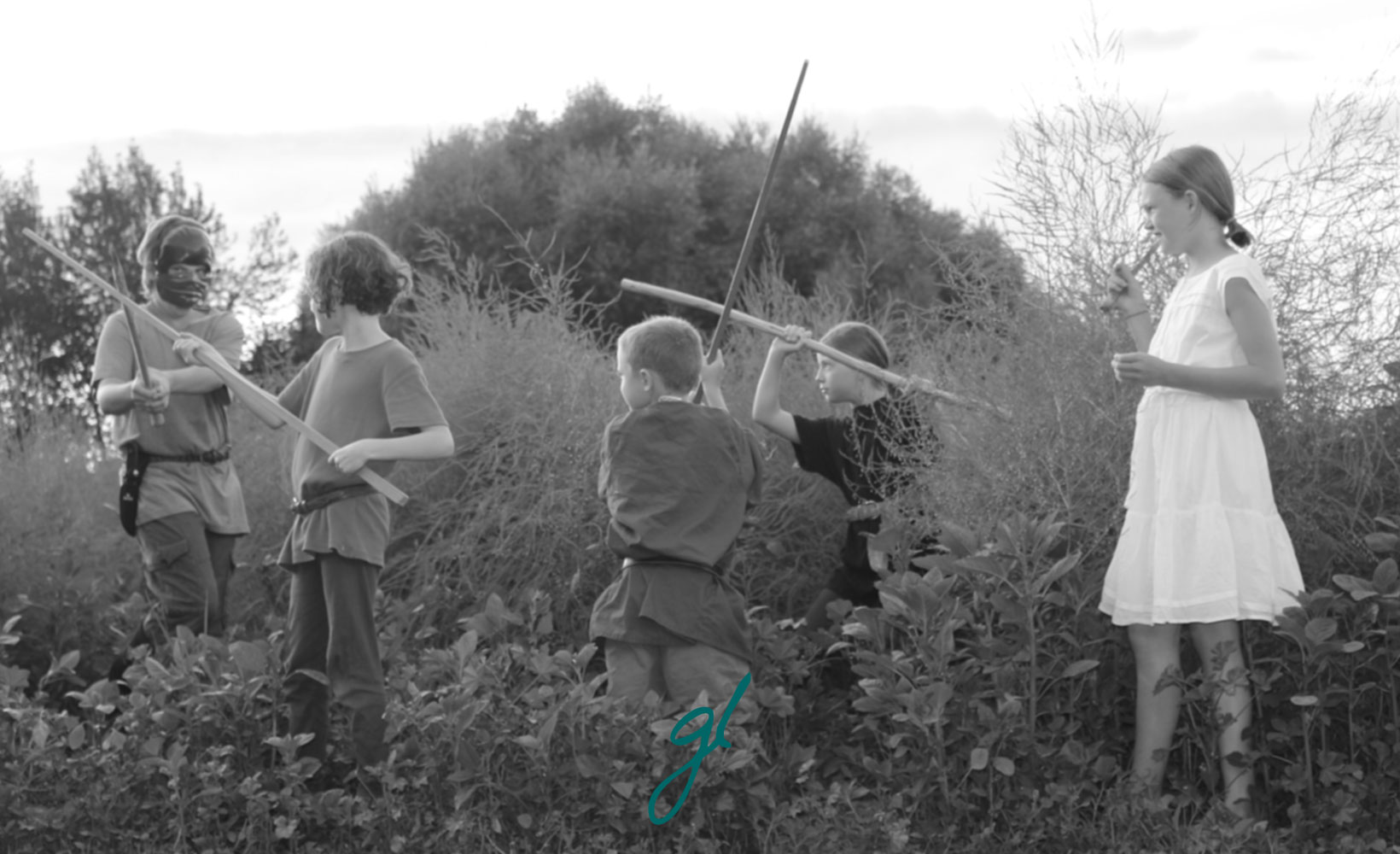


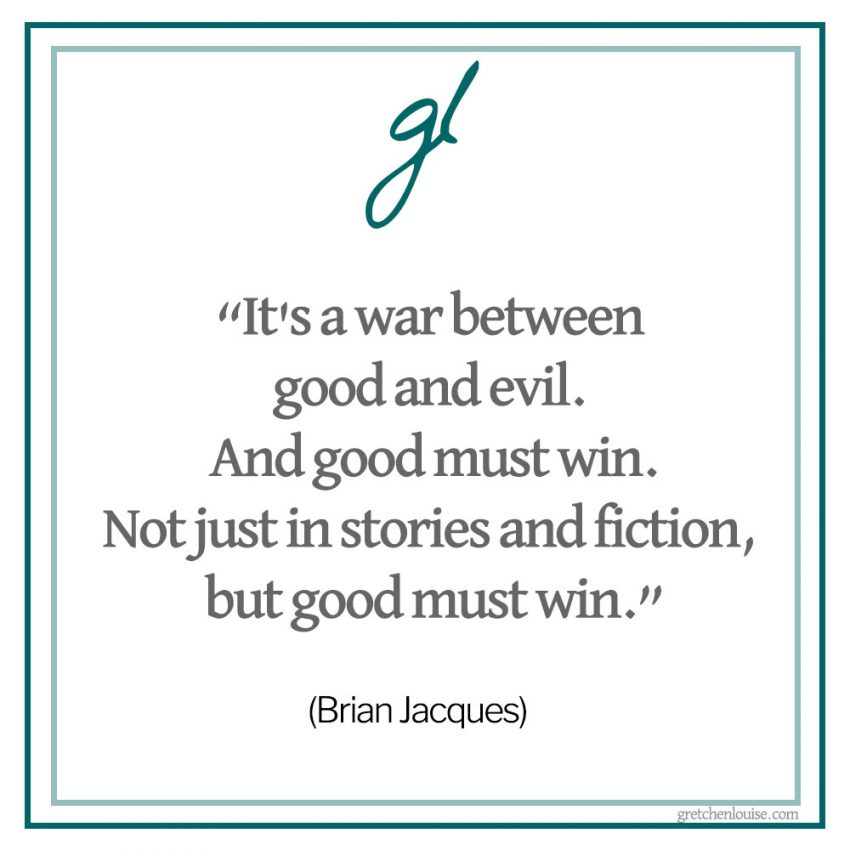

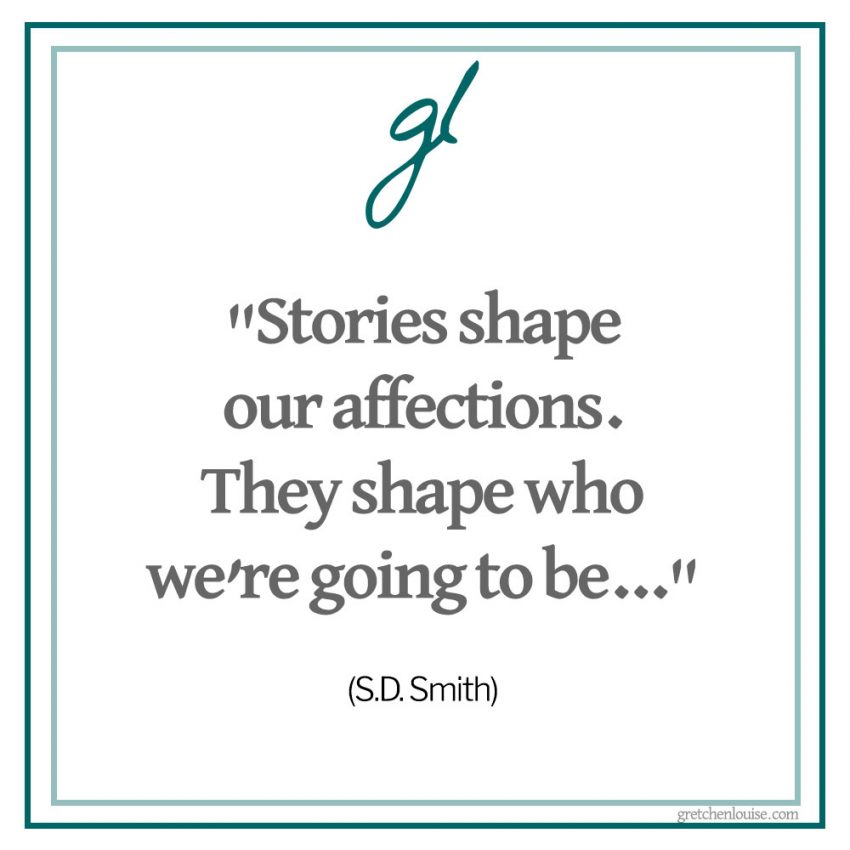
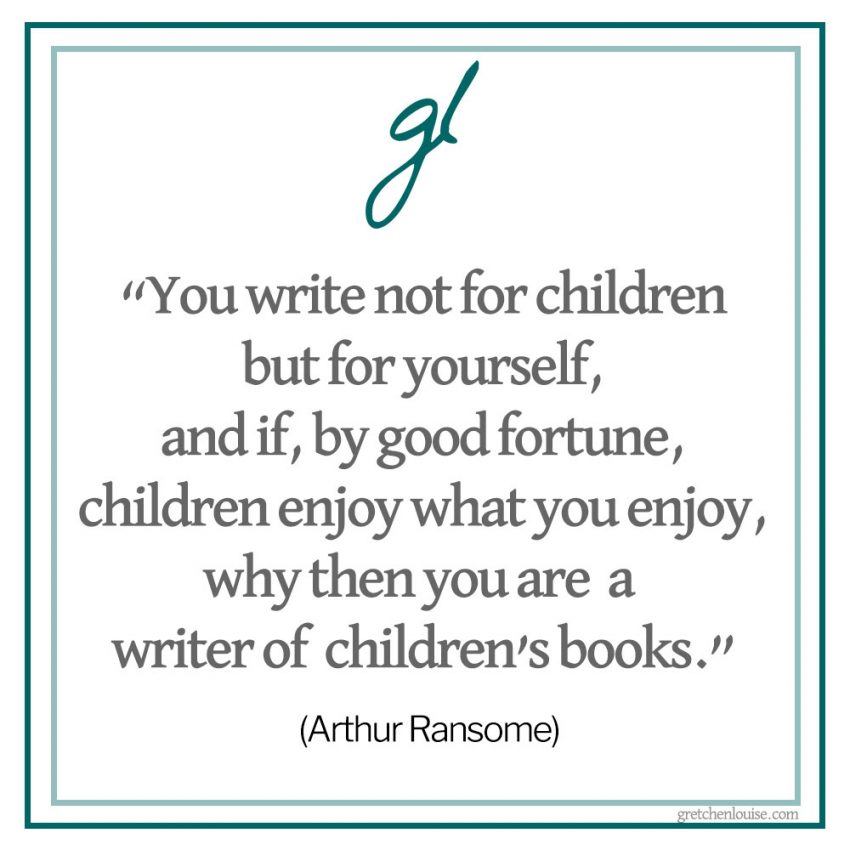


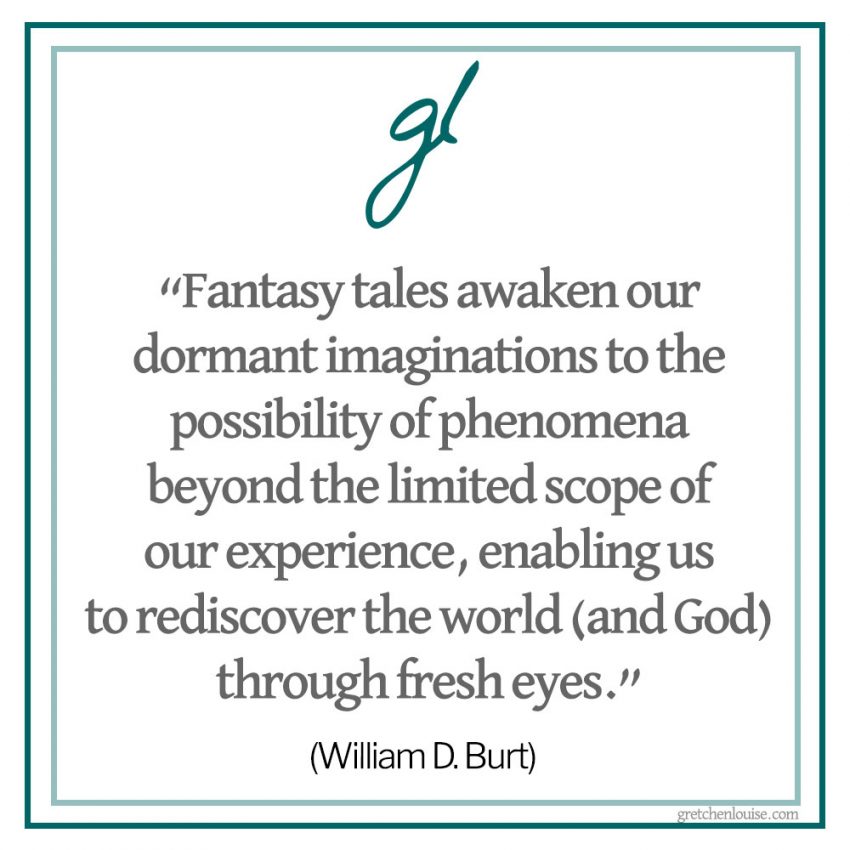
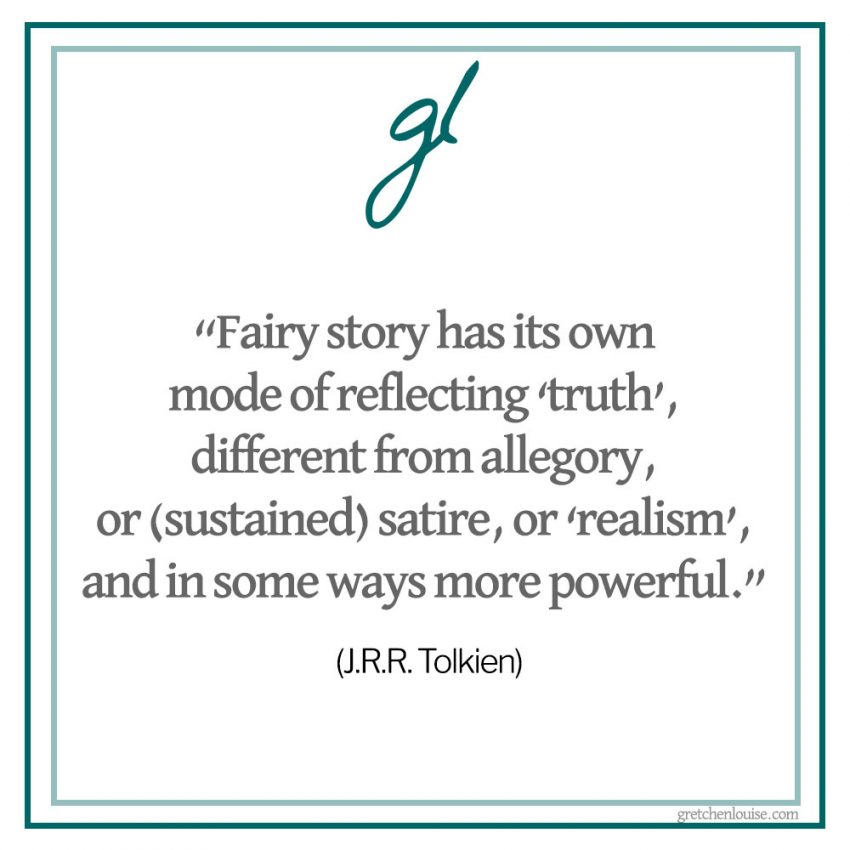

I loved all the American Girl books growing up. My third oldest brother and I shared a room when we were really little, and we used to listen to the “Pilgrim’s Progress” by John Bunyan. We used to be able to quote the whole story from beginning to end. I had an audio tape set of “A Christmas Carol” put out by Focus on the Family. I didn’t read the Narnia series until I was a young adult, but I am completely obsessed with Narnia.
In Christ,
Bethany
Gretchen, I love this post! The only series my oldest has read is Narnia. Love that I can direct her into another series…or a few!